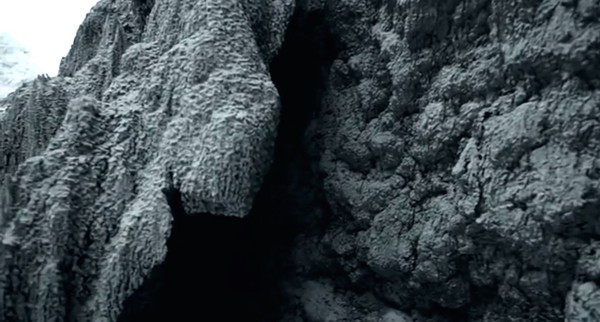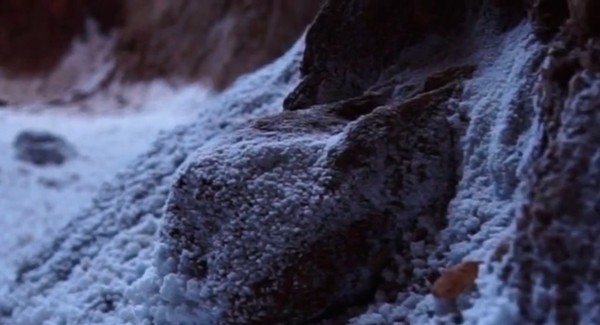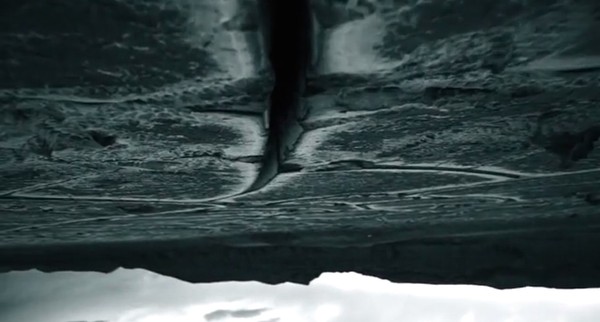In ‘Desert Tomb (Atacama),’ Phil Dadson’s exploration of the incredibly dry and arid region of Chile creates a beautifully hypnotic and evocative meditation on the foundational forces of nature. Beginning on the cracked desert floor at the base of the cliffs, the camera slowly pans across massive panels of dried earth creating a haunting picture of the seemingly pixelated ground. The effect is akin to someone traversing the surface of a two dimensional image at an angel, revealing the deep texture between the different sections, exploring the mosaic surface from right up close. At times, the colours move between a filtered black and white and the deep natural red colouring of the rock, reminiscent of television static when left out of tune. At one point, the camera pans up, and the pixels seem to warp slightly, like blots of liquid under a microscope. Occasionally the image sweeps up far enough to reveal the huge mountains in the background, indicating the wider implications of the erosion taking place.
The view then changes to focus on steep cliff faces, where tiny indents in the surface of the rock give the appearance of ancient lines of code. The close up here is vital, obscuring the viewer’s access to the full form and demanding attention to the tiny intricacies visible in the formation of the cliff face. These small dots run down the surface, creating the illusion of order and symmetry in formations which symbolise the entirely random natural processes which created them.
When the camera again changes focus, it’s to the white salt deposits from the infrequent storms which constitute the only real rainfall in the region, the mighty force which sculpts these patterns into the earth. The stark white colouring is powerful against the red of the ground and the buddle grey of the rock face; the build up is such that the natural materials seem unreal and alien, their specificity to the barren region giving them a vaguely dystopian feel in comparison to the typically urban environments we are so accustomed to.
It’s this mediation of the natural through both the digital and human gaze that gives the work some of its strongest conceptual underpinnings. The way the camera is utilised both captures and distorts the natural landscape through subtle movements as simple as turning the camera upside down. It’s a move Dadson has made elsewhere in his work to great effect, changing the form or sound of the natural through small, subtle human interventions. In the StoneMap installation for example, Dadson explores the Garwood and Taylor Dry Valleys in Antarctica as part of his Polar Projects works. In these works however, there appears to be less mitigation, the rock face appearing more familiar, and a crack of thunder in the middle of the piece grounding the environment in the realm of the natural and recognisable. At Atacama, made ten years later, his interventions have created greater fissures in the viewer’s access to the region, while making only the smallest adjustments to the nature of his own movements.
The effect of Dadson’s visual language here is augmented by a gorgeous soundtrack, performed on the artist’s homemade Bamboo-barrelzitherimher. The metallic drone of the instrument is juxtaposed with the imposing visual language of the surface of the rock, creating an oddly intertwined combination of sheer organic matter with the suggestion of foreign objects. The way Dadson directs the camera through the landscape gives the surfaces he traverses greater potency, as he weaves these natural elements into complex contemporary narratives about our digital language of the present day, far removed from the elementary forces on display at Atacama.
– Will Gresson




